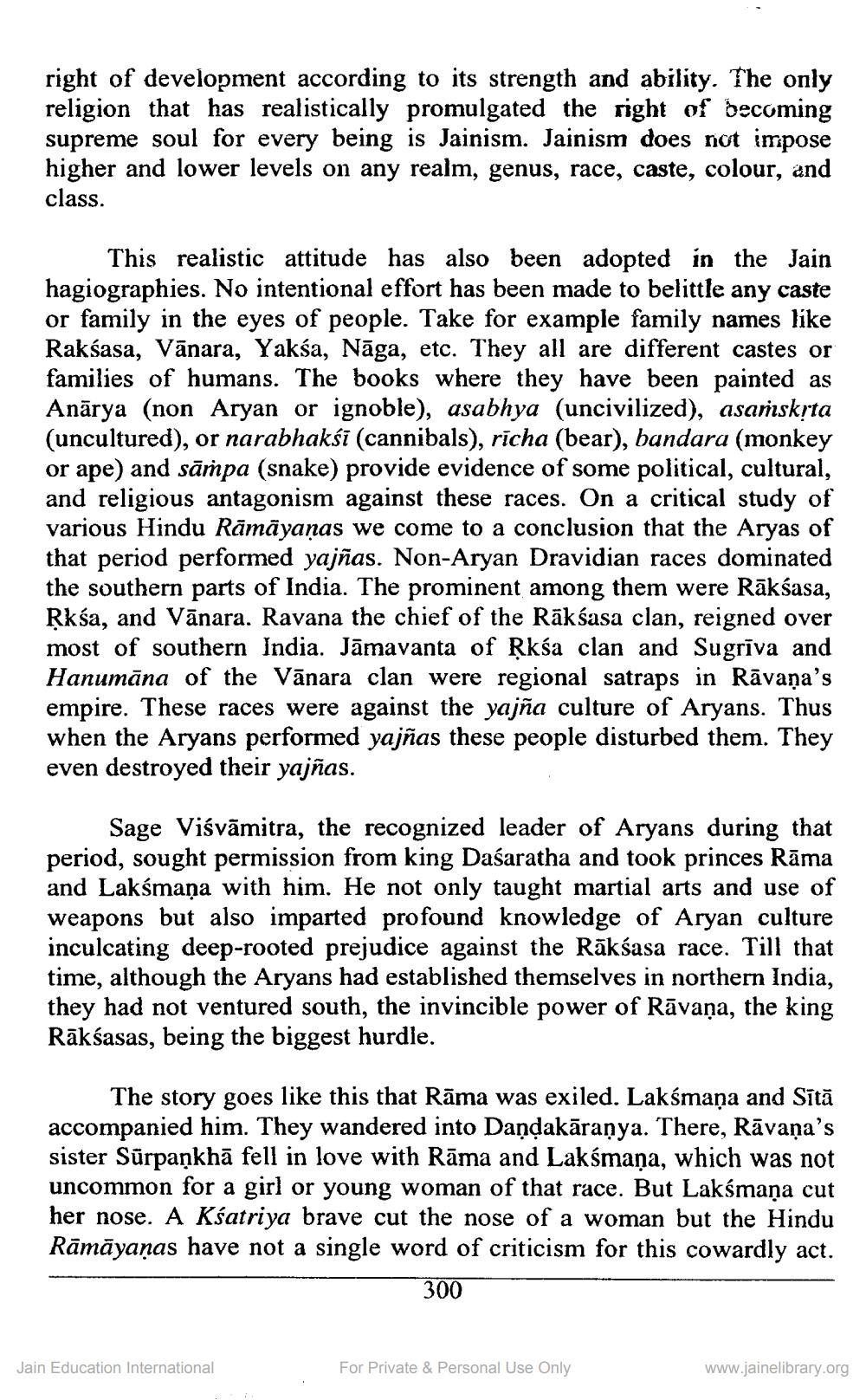________________
right of development according to its strength and ability. The only religion that has realistically promulgated the right of becoming supreme soul for every being is Jainism. Jainism does not impose higher and lower levels on any realm, genus, race, caste, colour, and class.
This realistic attitude has also been adopted in the Jain hagiographies. No intentional effort has been made to belittle any caste or family in the eyes of people. Take for example family names like Raksasa, Vānara, Yaksa, Nāga, etc. They all are different castes or families of humans. The books where they have been painted as Anārya (non Aryan or ignoble), asabhya (uncivilized), asarskrta (uncultured), or narabhakśī (cannibals), rīcha (bear), bandara (monkey or ape) and sāṁpa (snake) provide evidence of some political, cultural, and religious antagonism against these races. On a critical study of various Hindu Rāmāyaṇas we come to a conclusion that the Aryas of that period performed yajñas. Non-Aryan Dravidian races dominated the southern parts of India. The prominent among them were Rākśasa, Rksa, and Vānara. Ravana the chief of the Rākśasa clan, reigned over most of southern India. Jāmavanta of Rkša clan and Sugrīva and Hanumāna of the Vānara clan were regional satraps in Rāvana's empire. These races were against the yajña culture of Aryans. Thus when the Aryans performed yajñas these people disturbed them. They even destroyed their yajñas.
Sage Viśvāmitra, the recognized leader of Aryans during that period, sought permission from king Dasaratha and took princes Rāma and Laksmana with him. He not only taught martial arts and use of weapons but also imparted profound knowledge of Aryan culture inculcating deep-rooted prejudice against the Rāksasa race. Till that time, although the Aryans had established themselves in northern India, they had not ventured south, the invincible power of Rāvaņa, the king Rākśasas, being the biggest hurdle.
The story goes like this that Rāma was exiled. Laksmana and Sītā accompanied him. They wandered into Dandakāraṇya. There, Rāvana's sister Sūrpaņkhā fell in love with Rāma and Laksmana, which was not uncommon for a girl or young woman of that race. But Laksmana cut her nose. A Kšatriya brave cut the nose of a woman but the Hindu Rāmāyaṇas have not a single word of criticism for this cowardly act.
300
Jain Education International
For Private & Personal Use Only
www.jainelibrary.org




